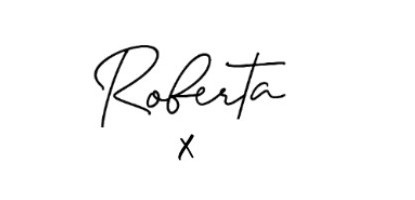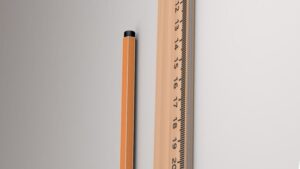Discovering your body shape can help you understand how certain clothes and styling techniques can enhance or balance out your body. Body shape analysis can be a useful tool when we are figuring out how to make the most of our natural features. However, it’s important to approach it with a balanced perspective.
Body Shape Analysis and the tips for dressing each body type have pros and cons. Measuring yourself correctly is often the first hurdle.
Ultimately, you should never feel like you can’t wear something you love as it’s not the recommended clothing type for your body shape. When it comes to body confidence, it’s all about wearing what feels right for you.
If seeking professional guidance and looking to pay for a service to help you with body shape, there are things to consider.
Benefits of Discovering Your Body Shape (Pros)

1. You will understand how to pick pieces that work with your shape
Body shape analysis can be useful for identifying clothing styles that fit and flatter specific body proportions. It provides a starting point for selecting garments that enhance your best features and create a visually pleasing silhouette.
2. You’ll feel more confident in your clothes
Wearing clothes that hug your curves and give shape, flatter, and drape in all the right places can do wonders for boosting confidence.
When we feel comfortable and stylish in what we’re wearing, it affects our self-esteem and belief in ourselves. When we know we look good, we feel good—that’s a fact!
3. Body shape analysis can help you streamline your style
Understanding our body shape can help streamline your wardrobe as you’ll stay focused on keeping items that work for your shape. It can also provide greater clarity on what to invest your money in, and make the shopping process more intentional.
It also allows you to focus on styles that are more likely to fit well and flatter your figure. This saves you time, as you won’t be distracted trying on clothes that you know are less unlikely to fit your shape.
4. It’s a great tool for building a long-lasting sustainable wardrobe
Knowing how to dress for your body shape is an invaluable tool when it comes to maintaining, adapting and refreshing your wardrobe. When you know why something doesn’t look its best and what would make it look better, you can get it altered.
This means you’ll know what to do if you want to modify your clothes as your style and body shape change.
Then there are the ways to style certain items, which can change the way they look as a complete outfit—layering, adding a blazer, or choosing the right type of belt (and knowing where to position it)—are all things you will be shown during a body analysis and styling session.
An important note body shape:
Understanding your body shape is a great starting point – but it’s just that, a starting point. Most women don’t fit neatly into one shape, and these systems weren’t created with every ‘body shape’ in mind.
You might be a blend of two or even three shapes, and what works best for you will shift depending on your clothes, your lifestyle, and how you feel in your body.
I never like to use body shape analysis in isolation with clients; it’s the styling and playing dress-up part of the process that brings the theory into practice. The real magic happens during the play phase—when we experiment, try things on, and explore new silhouettes together. That’s where the confidence builds and the freedom to express your style comes from, not solely relying on a body shape guide.
That being said, if this is enough information for you to feel confident – that’s excellent news!
Cons of Body Shape Tools
1. Oversimplification of unique body shapes
Body shape analysis can oversimplify the complexity of unique and beautifully diverse shaped and proportioned bodies. It reduces individuals to a set of generalised categories, which may not fully capture the uniqueness and variations within each shape.
Body shape analysis can be delivered as a service where a stylist doesn’t actually work with you but takes measurements and hands out generic body shape guides, which don’t take into account the following:
People’s bodies are not one-size-fits-all, and body shape analysis cannot account for the wide range of variations in body proportions, such as vertical body shape, height, bone structure, muscle mass, and weight distribution. These factors can greatly influence how certain clothing styles look on an individual.
2. Personal Preference
In body shape analysis, we are taught that symmetry and balance are important and that we should all aspire to look like we have an hourglass figure. Guides will tell you that you should wear a certain style to balance your body and avoid others, but that doesn’t mean you should.
If you are happy with your proportions, you don’t need to seek the balanced silhouette of the hourglass figure. Clothes should reflect our personality and style choices.
Plus, it doesn’t factor in how we ‘feel’ in certain garments, which is extremely important. I prefer oversized blazers, which aren’t recommended for a petite hourglass body shape, but I feel AMAZING in my blazers, and that confidence shows.
Body Type Variables to Consider
Body Proportions:
While body shape analysis focuses on overall proportions, individual body proportions play a significant role. Factors like vertical proportions (short or long torso, short or longer legs) recognise the way items fit based on different waist placements – this can influence how visually balanced an outfit can appear on an individual.
Personal Style and Preference:
Personal style is an important aspect of fashion. While body shape analysis can provide guidance, it’s crucial to consider your individual preferences, style, aesthetics, and comfort levels when selecting clothing.
Body Confidence:
Confidence and self-perception are subjective. Different individuals may feel confident and comfortable in various styles, regardless of their body shape.
Private Style & Identity Consultation
Begin your next chapter with clarity, confidence and a refined personal style – guided by an expert who understands who you are and who you’re becoming.

So, Is Paying for Help to Discover Your Body Shape Worth It?
Body shape analysis can offer helpful guidelines for selecting flattering clothing styles. If you lack creativity or hate to shop, getting assistance with clothing styles for your body shape can help build your confidence. Body shape analysis is best done in conjunction with a wardrobe edit and styling session or personal shopping, so you get to put into practice what you’ve discovered.
It’s invaluable for knowing what pieces of clothing are worth investing in for the future. If you’re buying a new coat from a brand with a high price tag, you’ll want to be assured that the style looks great on your body shape.
However, it’s important to approach body shape analysis and subsequent guidance as a tool rather than a strict rule. I believe a lot of the value in the sessions comes from learning the styling tips and how to make the most out of what you already own.
Don’t forget to check out my Body Shape Style Guides for additional guidance, but remember, these are tools to help you, not hinder you.






